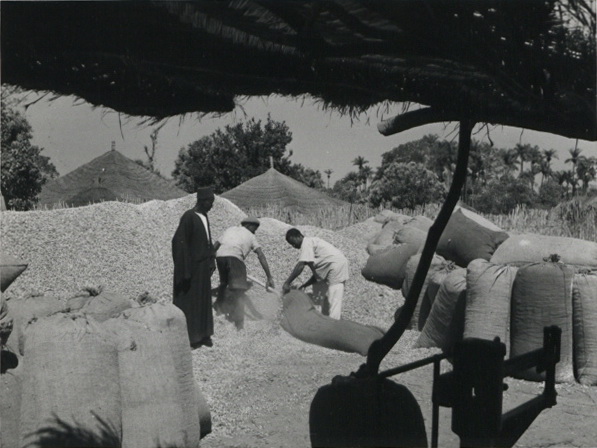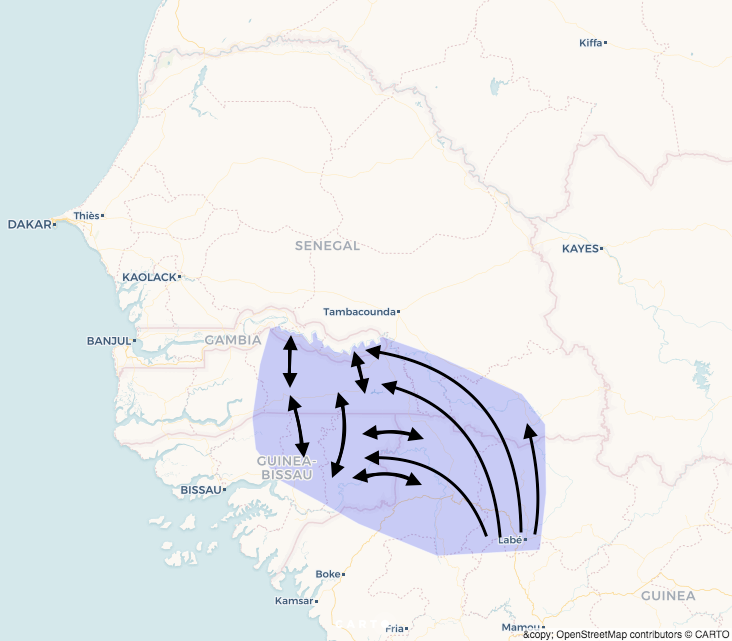Migration in Southern Senegambia
Southern Senegambia, the topic of this project, consists of Gambia, southern Senegal, Guinea-Bissau, and Guinea. This project focuses on a particular part of southern Senegambia, consisting of eastern Gambia, parts of southern Senegal, eastern Guinea-Bissau, and the Futa Jallon highlands of northwest Guinea (see the map above). While there are several different ethnic groups present in the region, most of the people are Fulbe.
Much like in many other parts of the world, southern Senegambians are and have always been on the move. However, people have moved in different directions and for different reasons depending on the historical period. Mobility and migration played a key role in the Islamization of the region (which is today almost entirely Muslim). Many have moved for economic reasons, whether for better farm or pastureland or to find work in a variety of professions.
My larger research looks at migration and mobility in southern Senegambia over the last 500 years, although it is primarily focused on the last 150. During this period, borderland residents moved to create new Islamic communities, to avoid harsh taxation, military conscription, and forced labor policies of colonial governments, to transport agricultural products and livestock, to work seasonally farming peanuts, and to marry across borders.
During the colonial period, Senegal and Guinea were ruled by the French, Gambia by the British, and Guinea-Bissau by the Portuguese. Over the course of the twentieth century, colonial governments attempted to restrict mobility in order to improve their capability to tax communities, use their labor to build roads and other infrastructure, and during the two world wars, to conscript Africans to fight in colonial militaries.
However, due to a lack of resources and minimal knowledge of realities on the ground, border control during the colonial period was limited. People were able to move between the colonies of southern Senegambia, allowing them to strategically manipulate the differences between imperial regimes of power, which made states wary of enacting burdensome demands that could lead to migration. In the case of Guinea-Bissau (then Portuguese Guinea), a lengthy war of independence from 1961 to 1974 led roughly 20 percent of the colony’s population to flee to neighboring Senegal and Guinea. In Guinea, the economic challenges after independence, and the increasingly restrictive rules put into place by Sékou Touré’s PDG government led more than a quarter of Guinea’s population to leave the country by the early 1980s.
Following independence in Guinea (1958), Senegal (1960), Gambia (1965), and Guinea-Bissau (1974), the independent states in this region attempted to control borders. They were met with a collective shrug by most of the region’s population, who continued to move in search of better opportunity.
Through the stories on this website (and the other history pages), you will see the variety of reasons people moved, the challenges in doing so, and the ways in which they integrated into new communities and into new countries.

